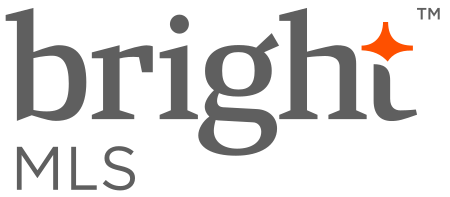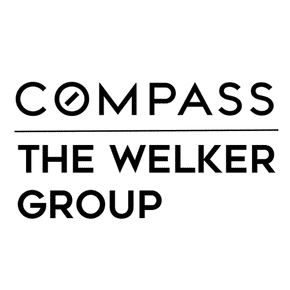Society Hill
Society Hill is a historic neighborhood in Center City Philadelphia, Pennsylvania with a population of 6,215 as of the 2010 United States Census. Settled in the early 1680s, Society Hill is one of the oldest residential neighborhoods in Philadelphia.
About Society Hill
Society Hill is a historic neighborhood in Center City, Philadelphia, Pennsylvania with a population of 6,215 as of the 2010 United States Census. Settled in the early 1680s, Society Hill is one of the oldest residential neighborhoods in Philadelphia. After urban decay developed between the late 19th and early 20th centuries, an urban renewal program began in the 1950s, restoring the area and its many historic buildings. Society Hill has since become one of the most expensive neighborhoods with the highest average income and second-highest real estate values in Philadelphia. Society Hill's historic colonial architecture, along with intelligent planning and restoration efforts, led the American Planning Association to designate it, in 2008, as one of the great American neighborhoods and a good example of sustainable urban living.
The neighborhood contains one of the largest concentrations of original 18th- and early 19th-century buildings in the United States. Society Hill is noted for its Franklin street lamps, brick sidewalks, cobblestone, and Belgian block streets bordered by two- to four-story brick rowhouses in Federal and Georgian architecture, and public buildings in Greek Revival architecture such as the Merchants' Exchange Building and the Old Pine Street Church.
source: wikipedia.org
Read More ▾Avg Work Commute
0 minsMedian Age
0Median Area Income
$0Median Sale Price
$0The Commute
Travel Methods
To City CenterAvailable Properties
Society Hill Sales Data
Percentage change from latest quarter vs same time period previous year
Data compiled using 2nd quarter 2024 data vs. same period from 2023
Median Sales Price
MEDIAN SALES PRICE

Demographics
- Filter by:
- Population
- Income
- Education
- Market Rents
Population by Age Level. Median Age 39.45. Households: 19,247.
In Thousand of Dollars. (Median Income: $88,437)
Population by Education Level
Fair Market Rents
Society Hill Schools & Education
Public & Private Institutions Of Learning
Education in the United States is provided by public, private and home schools. State governments set overall educational standards, often mandate standardized tests for K–12 public school systems and supervise, usually through a board of regents, state colleges, and universities. Discover the K12-powered public or private school that is best suited for your child's needs in the area.
Avg School Rating
3.2/5Publically Funded
12Private / Charter
4Catholic / Religious
1Publically Funded
Fanny Jackson Coppin School
Elementary School
- Preschool - 8th Grade
- Student - Teacher Ratio: 13 : 1
-
Great School Rating:
- Website
Nebinger George W School
Elementary School
- Preschool - 8th Grade
- Student - Teacher Ratio: 12 : 1
-
Great School Rating:
- Website
Kirkbride Eliza B School
Elementary School
- Preschool - 8th Grade
- Student - Teacher Ratio: 14 : 1
-
Great School Rating:
- Website
Vare-Washington Elementary School
Elementary School
- Preschool - 8th Grade
- Student - Teacher Ratio: 13 : 1
-
Great School Rating:
- Website
Christopher Columbus Cs
Elementary School
- Kindergarten - 8th Grade
- Student - Teacher Ratio: 15 : 1
-
Great School Rating:
- Website
Meredith William M School
Elementary School
- Kindergarten - 8th Grade
- Student - Teacher Ratio: 15 : 1
-
Great School Rating:
- Website
Christopher Columbus Charter North
Elementary School
- Kindergarten - 5th Grade
- Student - Teacher Ratio: Not Reported : 1
- Great School Rating: N/A
- Website
Mccall Gen George A School
Elementary School
- Kindergarten - 8th Grade
- Student - Teacher Ratio: 14 : 1
-
Great School Rating:
- Website
Mastery Charter High School - Lenfest Campus
Middle School
- 7th Grade - 12th Grade
- Student - Teacher Ratio: 14 : 1
-
Great School Rating:
- Website
Creative And Performing Arts
High School
- 9th Grade - 12th Grade
- Student - Teacher Ratio: 15 : 1
-
Great School Rating:
- Website
Academy At Palumbo
High School
- 9th Grade - 12th Grade
- Student - Teacher Ratio: 19 : 1
-
Great School Rating:
- Website
Constitution High School
High School
- 9th Grade - 12th Grade
- Student - Teacher Ratio: 16 : 1
-
Great School Rating:
- Website
Private / Charter
St. Peter's School
Elementary School
- Preschool - 8th Grade
- Student - Teacher Ratio: Not Reported : 1
- Great School Rating: N/A
- Website
Settlement Music School Head Start
Pre School
- Preschool - Preschool
- Student - Teacher Ratio: 6 : 1
- Great School Rating: N/A
- Website
Beginnings Learning Center
Other School
- Student - Teacher Ratio: Not Reported : 1
- Great School Rating: N/A
- Website
Chesterbrook Academy
Elementary School
- Kindergarten - Kindergarten
- Student - Teacher Ratio: 6 : 1
- Great School Rating: N/A
- Website
Catholic / Religious
St Mary Interparochial School
Elementary School
- Kindergarten - 8th Grade
- Student - Teacher Ratio: 22 : 1
- Great School Rating: N/A
- Website
Where To Drink, Dine, Shop, Relax & Recline


















































































































































